List of World Heritage Sites in Switzerland

Architectural Work of Le Corbusier Location of World Heritage Sites within Switzerland |
This is a list of World Heritage Sites in Switzerland with properties of cultural and natural heritage in Switzerland as inscribed in UNESCO's World Heritage List or as on the country's tentative list.[1] Switzerland accepted the Convention Concerning the Protection of the World Cultural and Natural Heritage on 17 September 1975, after which it could nominate properties on their territory to be considered for the World Heritage List.[2]
Currently, eleven properties in or partially in Switzerland are inscribed on the World Heritage List. Eight of these are cultural properties and three are natural properties.[1] The first three were added to the list in 1983 and the latest in 2011. There is one site, Œuvre urbaine et architecturale de Le Corbusier, which has been on the tentative list since 2004,[3] though in 2016 a larger collection of Le Corbusier's work, The Architectural Work of Le Corbusier, an Outstanding Contribution to the Modern Movement was inscribed.[4]
The names in the tables below are the names of the properties as used on the website of UNESCO.[1] There are three different types of properties possible: cultural, natural, and mixed.[note 1] Selection criteria i, ii, iii, iv, v, and vi are the cultural criteria, and selection criteria vii, viii, ix, and x are the natural criteria.[5] The years for the properties on the World Heritage List are the years of inscription, the years for the tentative list are those of submission.[1]
Sites
| Site | Image | Location | Criteria | Area ha (acre) | Year | Description |
|---|---|---|---|---|---|---|
| Benedictine Convent of St John at Müstair | | Müstair, 46°37′46.02″N 10°26′51.54″E / 46.6294500°N 10.4476500°E | Cultural: (iii) | 2,036 (5,030) | 1983 | The Convent of Müstair is a Christian monastery from the Carolingian period. It has Switzerland's greatest series of figurative murals, painted c. 800 AD, along with other Romanesque art and designs.[6] |
| La Chaux-de-Fonds / Le Locle, Watchmaking Town Planning | 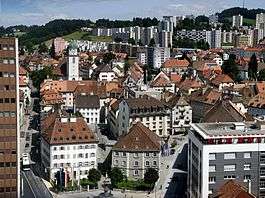 | Canton of Neuchâtel, 47°6′14″N 6°49′58″E / 47.10389°N 6.83278°E | Cultural: (iv) | 284 (700) | 2009 | The site consists of two towns situated close to one another in a remote environment in the Swiss Jura mountains. Due to poor agricultural land, the watchmaking industry developed in the towns in the 19th century. After several devastating fires the towns were rebuilt to support this single industry. The town of La Chaux-de-Fonds was described by Karl Marx as a “huge factory-town” in Das Kapital where he analyzed the division of labour in the watchmaking industry of the Jura.[7] |
| Convent of St Gall |  | St. Gallen, 47°25′23.988″N 9°22′40.008″E / 47.42333000°N 9.37778000°E | Cultural: (ii), (iv) | — | 1983 | The Carolingian Convent of St Gall was one of the most important in Europe. It was in operation from the 8th century to its secularization in 1805. Its library is one of the richest and oldest in the world and contains a number of precious manuscripts such as the Plan of Saint Gall. Portions of the building were rebuilt in the Baroque style.[8] |
| Lavaux, Vineyard Terraces |  | Vaud, 46°29′31″N 6°44′46″E / 46.49194°N 6.74611°E | Cultural: (iii), (iv), (v) | 1,408 (3,480) | 2007 | The Lavaux Vineyard Terraces stretch for about 30 km (19 mi) along the south-facing northern shores of Lake Geneva from Chillon Castle to the eastern outskirts of Lausanne in the Vaud region. The current terraces can be traced back to the 11th century, when Benedictine and Cistercian monasteries controlled the area.[9] |
| Monte San Giorgio | 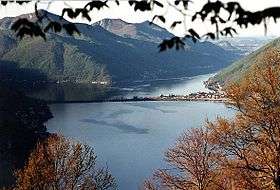 | Ticino, 45°53′20″N 8°54′50″E / 45.88889°N 8.91389°E | Natural: (viii) | 3,207 (7,920) | 2010 | The pyramid-shaped, wooded mountain of Monte San Giorgio beside Lake Lugano is regarded as the best fossil record of marine life from the Triassic Period (245–230 million years ago). The sequence records life in a tropical lagoon environment, sheltered and partially separated from the open sea by an offshore reef. Diverse marine life flourished within this lagoon, including reptiles, fish, bivalves, ammonites, echinoderms and crustaceans. Because the lagoon was near land, the remains also include land-based fossils of reptiles, insects and plants, resulting in an extremely rich source of fossils.[10] |
| Old City of Berne |  | Bern, 46°56′53.016″N 7°27′1.008″E / 46.94806000°N 7.45028000°E | Cultural: (iii) | 84,684 (209,260) | 1983 | Founded in the 12th century on a hill site surrounded by the Aare River, Bern developed along the peninsula. Following a devastating fire, the entire town was rebuilt in a unified style. The early wooden buildings were replaced with sandstone, followed by arcades in the 15th century arcades and fountains in the 16th century. The medieval town was rebuilt in the 18th century, but retained its earlier character.[11] |
| Prehistoric pile dwellings around the Alps | 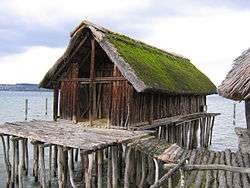 | 47°16′42″N 8°12′27″E / 47.27833°N 8.20750°E | Cultural: (iv), (v) | 3,961 (9,790) | 2011 | Contains 111 small individual sites with the remains of prehistoric pile-dwelling (or stilt house) settlements in and around the Alps built from around 5000 to 500 B.C. on the edges of lakes, rivers or wetlands. While only some of the sites have been excavated, they contain a wealth of information on life and trade in agrarian Neolithic and Bronze Age cultures in Alpine Europe. Fifty-six of the sites are located in Switzerland.[12] |
| Rhaetian Railway in the Albula / Bernina Landscapes | 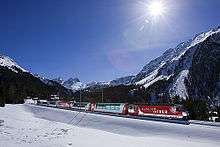 | Graubünden and Tirano, 46°29′54″N 9°50′47″E / 46.49833°N 9.84639°E | Cultural: (ii) (iv) | 109,386 (270,300) | 2008 | The Rhaetian Railway in the Albula / Bernina Landscapes, brings together two historic railway lines that cross the Swiss Alps through those two passes. The railways provided a rapid and easy route into many formerly isolated alpine settlements. Building the railroads required overcoming a number of technical challenges with bridges and tunnels.[13] |
| Swiss Alps Jungfrau-Aletsch |  | Cantons of Bern and Valais, 46°30′0″N 8°1′59″E / 46.50000°N 8.03306°E | Natural: (vii), (viii), (ix) | 82,400 (204,000) | 2007 | The site includes several of the highest mountains in the Central Alps along with the largest glacier in Eurasia. The landscape provides information on the succession of plants after the retreat of a glacier and allows study of the retreat of glaciers resulting from climate change. The impressive landscape has also played an important role in European art, literature, mountaineering and tourism.[14] |
| Swiss Tectonic Arena Sardona | 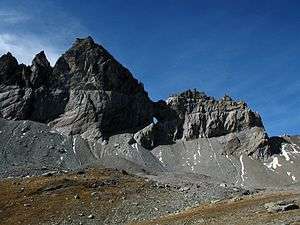 | Glarus, St. Gallen and Graubünden, 46°55′0″N 9°15′0″E / 46.91667°N 9.25000°E | Natural: (viii) | 32,850 (81,200) | 2008 | The Swiss Tectonic Arena Sardona in the north-eastern part of the country covers a mountainous area which features seven peaks that rise above 3,000 m (9,800 ft). The area displays an exceptional example of mountain building through continental collision and displays a clear example of tectonic thrust, i.e. the process whereby older, deeper rocks are carried onto younger, shallower rocks. The site has been a key site for the geological sciences since the 18th century.[15] |
| The Architectural Work of Le Corbusier, an Outstanding Contribution to the Modern Movement | | N46 28 6.29 E6 49 45.61 | Cultural: (i), (ii), (vi) | — | 2016 | Chosen from the work of Le Corbusier, the 17 sites comprising this transnational serial property are spread over seven countries and are a testimonial to the invention of a new architectural language that made a break with the past. They were built over a period of a half-century, in the course of what Le Corbusier described as “patient research”. The Complexe du Capitole in Chandigarh (India), the National Museum of Western Art, Tokyo (Japan), the House of Dr Curutchet in La Plata (Argentina) and the Unité d’habitation in Marseille (France) reflect the solutions that the Modern Movement sought to apply during the 20thcentury to the challenges of inventing new architectural techniques to respond to the needs of society. These masterpieces of creative genius also attest to the internationalization of architectural practice across the planet.[16] |
| Three Castles of Bellinzona | | Bellinzona, 46°11′35.304″N 9°1′20.712″E / 46.19314000°N 9.02242000°E | Cultural: (iv) | — | 2000 | The Bellinzona site consists of a group of fortifications grouped around the castle of Castelgrande, which stands on a rocky peak looking out over the entire Ticino valley. Running from the castle, a series of fortified walls protect the ancient town and block the passage through the valley. A second castle (Montebello) forms an integral part of the fortifications, while a third but separate castle (Sasso Corbaro) was built on an isolated rocky promontory south-east of the other fortifications.[17] |
Properties on the tentative list
| Site | Image | Location | Criteria | Area ha (acre) | Year | Description |
|---|---|---|---|---|---|---|
| Œuvre urbaine et architecturale de Le Corbusier |  | La Chaux-de-Fonds, Geneva 47°06′N 6°48′E / 47.100°N 6.800°E | Cultural: (i)(ii)(iv)(vi) | — | 2004 | A collection of four buildings; Villa Jeanneret-Perret, Villa Schwob, Petite villa au bord du lac Léman and Immeuble Clarté, by the famed Swiss architect Le Corbusier.[18] |
See also
Notes
- ↑ There are no mixed properties in Switzerland on the World Heritage List or on the country's tentative list.
References
- 1 2 3 4 Switzerland. UNESCO World Heritage Centre. Retrieved on 6 April 2012.
- ↑ State Parties, UNESCO World Heritage Centre, Retrieved on 6 April 2012
- ↑ Tentative Lists, UNESCO World Heritage Centre, Retrieved on 2011-07-21
- ↑ "Four new sites inscribed on UNESCO's World Heritage List" (Press release). UNESCO. 17 July 2016.
- ↑ The Criteria. UNESCO World Heritage Centre. Retrieved on 2009-07-23.
- ↑ "Benedictine Convent of St John at Müstair". UNESCO. Retrieved 29 October 2011.
- ↑ "La Chaux-de-Fonds / Le Locle, Watchmaking Town Planning". UNESCO. Retrieved 8 November 2011.
- ↑ "Convent of St Gall". UNESCO. Retrieved 31 October 2011.
- ↑ "Lavaux, Vineyard Terraces". UNESCO. Retrieved 14 February 2012.
- ↑ "Monte San Giorgio". UNESCO. Retrieved 14 February 2012.
- ↑ "Old City of Berne". UNESCO. Retrieved 14 February 2012.
- ↑ "Prehistoric Pile dwellings around the Alps". UNESCO. Retrieved 14 February 2012.
- ↑ "Rhaetian Railway in the Albula / Bernina Landscapes". UNESCO. Retrieved 14 February 2012.
- ↑ "Swiss Alps Jungfrau-Aletsch". UNESCO. Retrieved 8 November 2011.
- ↑ "Swiss Tectonic Arena Sardona". UNESCO. Retrieved 14 February. Check date values in:
|access-date=(help) - ↑ "The Architectural Work of Le Corbusier, an Outstanding Contribution to the Modern Movement". UNESCO. Retrieved 17 July 2016.
- ↑ "Three Castles of Bellinzona". UNESCO. Retrieved 14 February 2012.
- ↑ "Œuvre urbaine et architecturale de Le Corbusier". UNESCO. Retrieved 6 April 2012.
